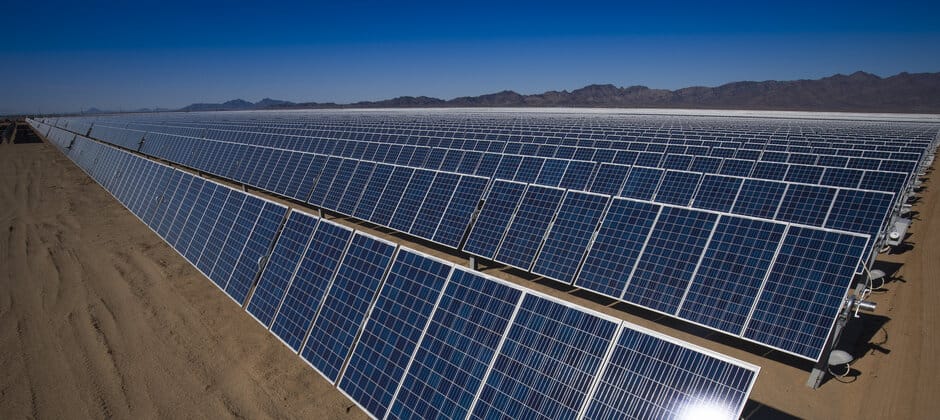Share this article
TWS2021: Limited evidence birds confuse solar panels with lakes
Aquatic bird carcasses have been discovered around solar power facilities for years, even when these developments are miles from water bodies. Researchers have previously hypothesized a “lake effect” where these birds—some of which require water to take off and land—are confusing reflective solar panels with water bodies and colliding into them.
But little evidence has shown that this lake effect is the cause of these deaths near solar facilities.
Karl Kosciuch, a senior biologist with Western EcoSystems Technology Inc. (WEST), a company that “provides environmental and statistical consulting services and contract research,” and his colleagues set out to determine the amount of support for a lake effect.
They conducted surveys of both water dependent birds like western grebes (Aechmophorus occidentalis), which need water to take off or land, and birds like American avocets (Recurvirostra americana) that use land but often feed in water.
The researchers surveyed birds at three solar facilities around the U.S. Southwest and compared the birds that showed up there to surveys at adjacent land without solar panels. They also compared species diversity at these sites to Lake Tamarisk in California, according to research that Kosciuch will present at The Wildlife Society’s virtual 2021 Annual Conference.
Kosciuch and his colleagues categorized different land types around the solar facilities and looked at if that made a difference in species diversity or mortalities. The team looked at one facility near agricultural land, three near desert/scrub land, and one near grassland. The team chose reference points for all five of these facilities in land plots similar to land where the solar facility was before being built.
They found higher species diversity at Lake Tamarisk than at any of the facilities or reference points. They also didn’t see huge differences in species diversity between the reference points and the facilities.
“We did not find that the solar facilities in the desert/scrub, grassland or agricultural environment had notably higher species richness than the reference area,” Kosciuch said.
But bird mortality differed depending on the land type, whether grassland, agriculture or desert.
Overall, they found nearly no evidence of dead aquatic birds in grasslands—they didn’t find any dead at the reference point and only one dead around the solar facility in the grassland area. In the agricultural land, they found five dead at the facility and six dead at the reference point away from the facility.
The increased presence of aquatic birds in the agricultural area makes sense, Kosciuch said, because there are various aquatic features like canals for them to use in these areas.
They found three birds dead in the desert facility, and none in the desert reference site nearby.
“Overall, we found limited evidence of attraction of aquatic habitat birds to the PV solar facility sites. We had no evidence of landing, circling or approaching,” Kosciuch said. But they did observe great egrets (Ardea alba) at a desert facility 12 miles away from the nearest water body. “The observation of great egrets perched at this solar project was a signal that was worthwhile noting.”
Kosciuch said their research shows the effect of the solar panels may be similar to that of a wet parking, which occurs under specific conditions and can lead to problems for aquatic birds as well, rather than a ubiquitous omnipresent signal of a lake for all aquatic birds.
Conference attendees can visit office hours for this contributed paper on Thursday, Nov. 4 from 3 p.m. to 4 p.m. to learn more and ask questions.
Header Image: Solar panels in southwestern deserts were thought to possibly create a lake effect, confusing passing aquatic birds. Credit: Tom Brewster Photography








